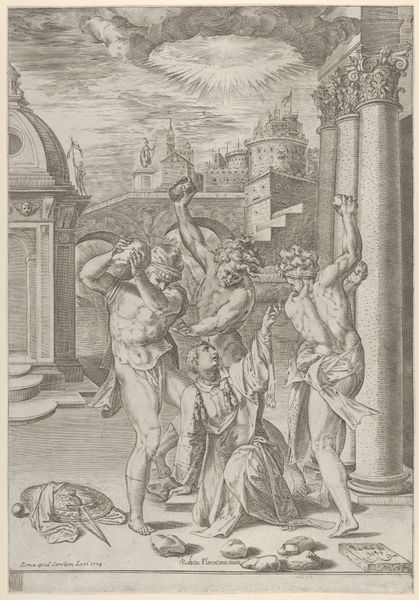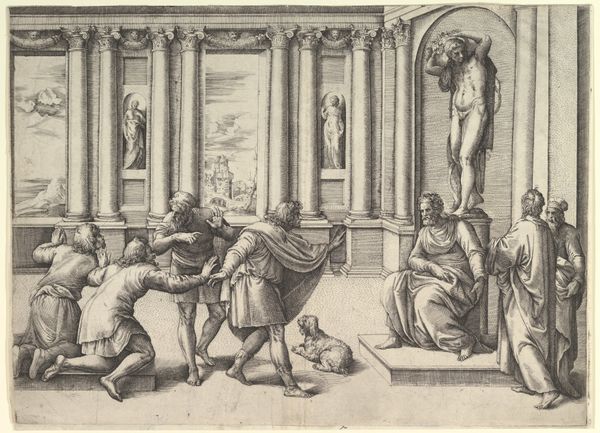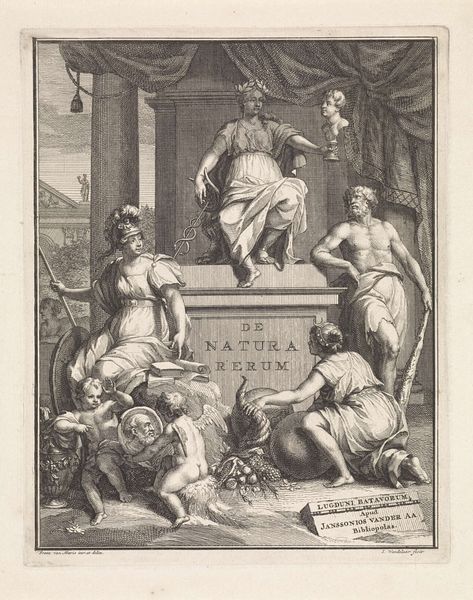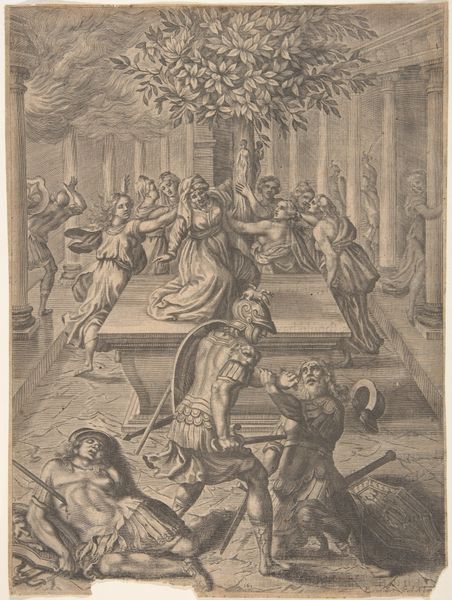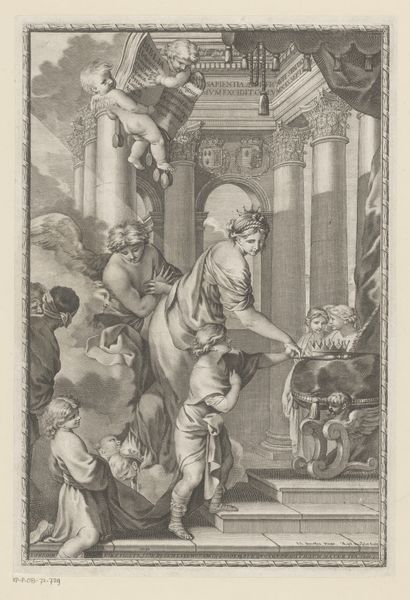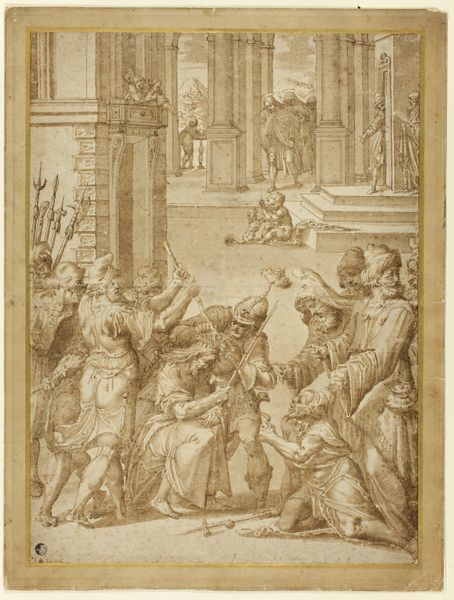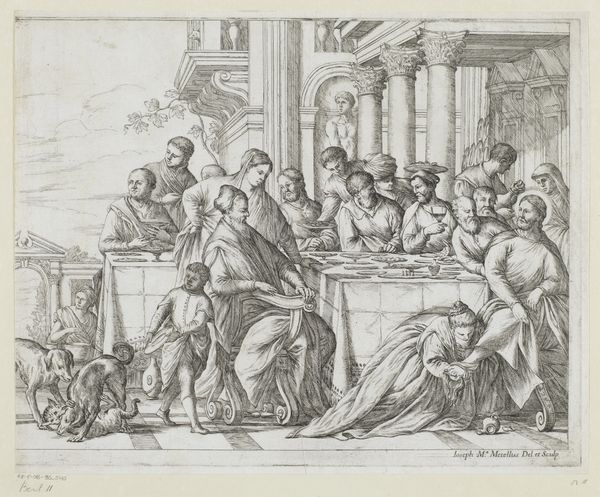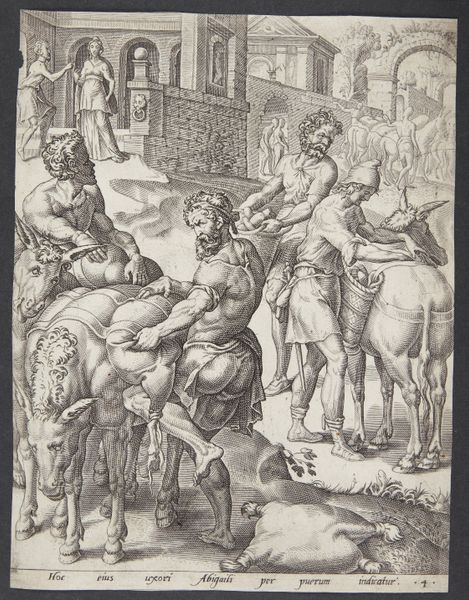
print, engraving
#
narrative-art
# print
#
figuration
#
history-painting
#
italian-renaissance
#
engraving
Dimensions: height 279 mm, width 210 mm
Copyright: Rijks Museum: Open Domain
Curator: Look at the precise line work in this engraving by Diana Mantuana, made in 1576. The piece is titled *Christus te gast bij Simon de Farizeeër*, or "Christ with Simon the Pharisee." Editor: My initial impression is one of profound theatricality—a drama unfolding in monochrome. There’s so much gestural tension and implied movement despite its stillness. Curator: Exactly. Note how Mantuana has used the crisp lines to build a deep architectural space in the background, drawing your eye through the scene. Her skilled application of hatching creates the play of light and shadow defining the bodies. Editor: I'm struck by the narrative implications. A woman washes Christ's feet, challenging societal hierarchies and the Pharisees' expectations. Mantuana, as a female artist in the 16th century, depicts the disruption of these expectations through the female figure—one assumes her identity becomes important in that gesture. Curator: Consider, too, the way she manipulates perspective. The table, while slightly distorted, still anchors the figures, creating a balanced composition that centralizes Christ as a focal point of moral gravity, directing the narrative through strategic poses and calculated use of negative space. Editor: Right, but I can't help reading into the socio-political statement as a powerful reflection on faith, gender, and transgression. As a woman engraver, what must it have been like depicting these canonical scenes when society at the time questioned a woman’s worth? Curator: One could interpret those choices biographically; but equally compelling are her techniques in composition and depth to invite us, the viewers, into a moment suspended between judgment and grace. Editor: So much to see and to contemplate—this piece demands we see it not only for its artfulness, but also for what it does—and to whom. It forces the discussion. Curator: Absolutely. Whether considering its masterful engraving or its potent story, Mantuana’s print captures the era's artistic and spiritual pulse.
Comments
No comments
Be the first to comment and join the conversation on the ultimate creative platform.
